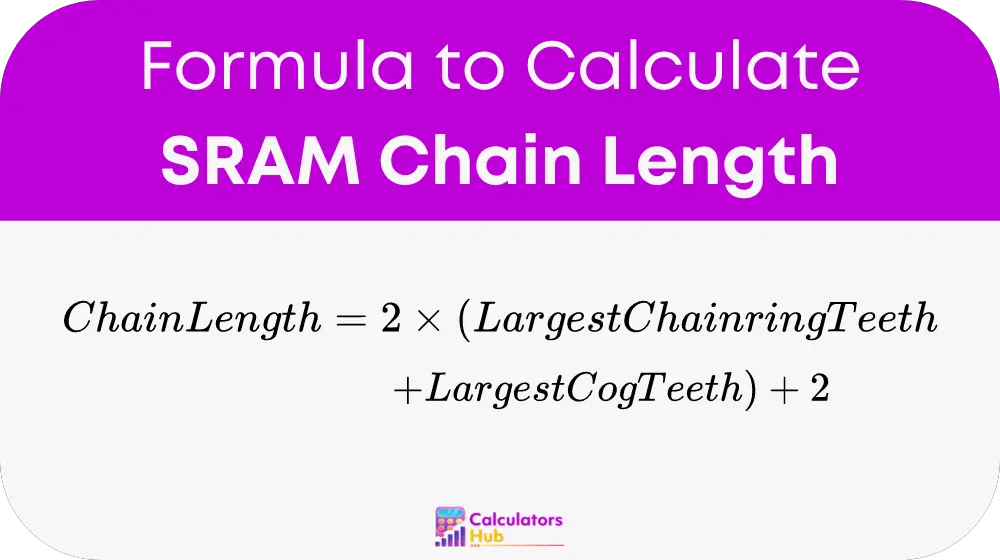The SRAM Chain Length Calculator is an essential tool for cyclists looking to ensure their bike performs at its best. By calculating the optimal chain length, this tool helps maintain proper tension and alignment, which are crucial for efficient power transfer and smooth shifting. A correctly sized chain minimizes wear on the drivetrain and enhances the overall cycling experience.
Formula of SRAM Chain Length Calculator
To determine the correct chain length for your SRAM bike, use the following formula:

Step-by-step guide:
- Identify the largest chainring teeth: Count the number of teeth on the largest chainring in the front.
- Identify the largest cog teeth: Count the number of teeth on the largest cog in the rear cassette.
- Apply the formula: Plug these values into the formula to calculate the chain length.
Table for General Terms
Below is a helpful table that includes general terms related to chain sizing, which provides a quick reference without needing to perform calculations each time:
| Term | Definition |
|---|---|
| Chainring Teeth | The number of teeth on a specific chainring. |
| Cog Teeth | The number of teeth on a cog in the cassette. |
| Drivetrain Efficiency | The effectiveness of energy transfer through the chain to the drivetrain components. |
| Chain Wear | The extent of wear and tear on the chain due to usage. |
Example of SRAM Chain Length Calculator
For a bike with a largest chainring of 42 teeth and a largest cog of 28 teeth:
- Chain Length = 2 * (42 + 28) + 2 = 142 links
This calculation ensures that your bike chain is the correct length for optimal performance.
Most Common FAQs
A: It's advisable to check your chain length every few months, especially if you ride frequently, to account for stretching and wear.
A: While the formula provided is tailored for SRAM setups, it is generally applicable to most bicycles. However, consulting with a professional or referring to your bike manufacturer's guidelines is recommended.
A: If the calculation results in a non-standard length, it is best to round to the nearest even number to ensure you can use a standard chain without modification.
Cette formule n’est as valable pour les VTT tout suspendus
Merci pour votre commentaire ! Vous avez raison, cette formule n’est pas valable pour les VTT tout suspendus. Elle est principalement conçue pour calculer la longueur de chaîne sur des vélos standard ou semi-rigides. Pour les VTT tout suspendus, il faut tenir compte de la croissance de la chaîne due aux mouvements de la suspension.